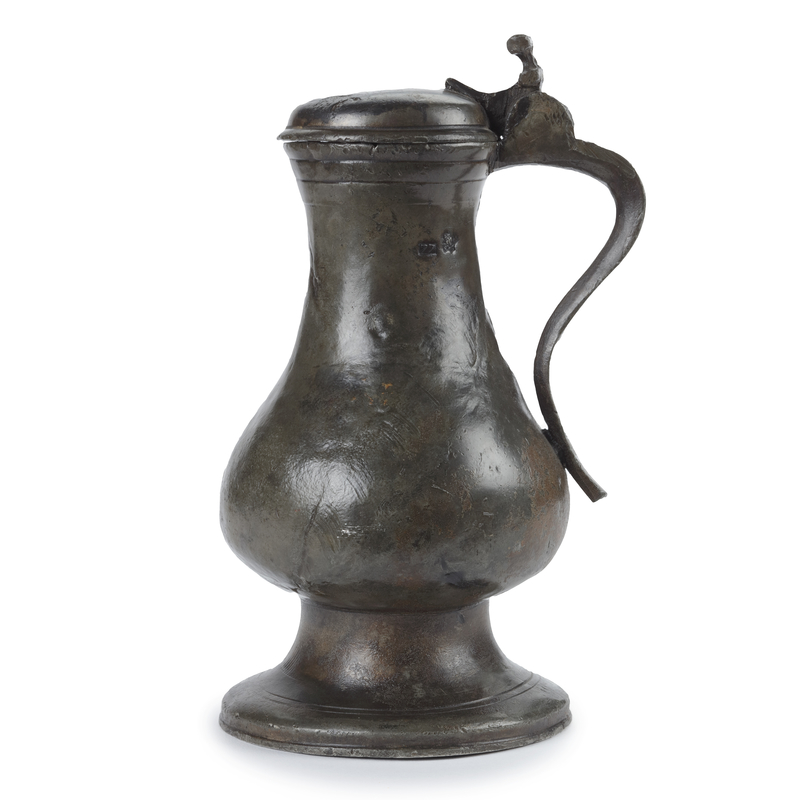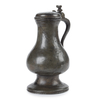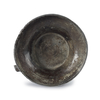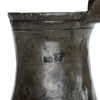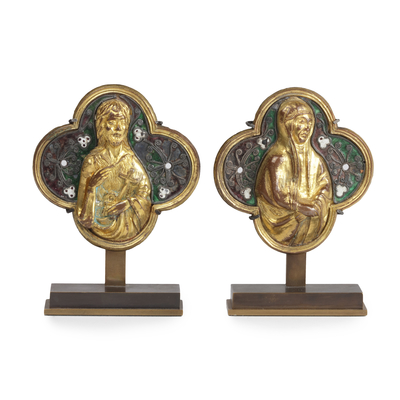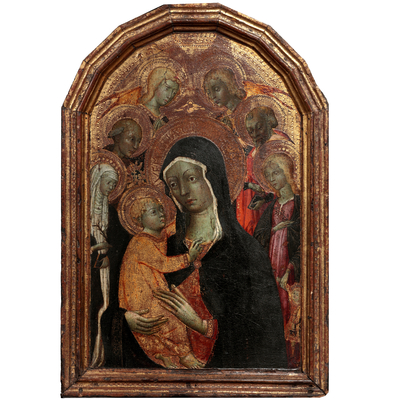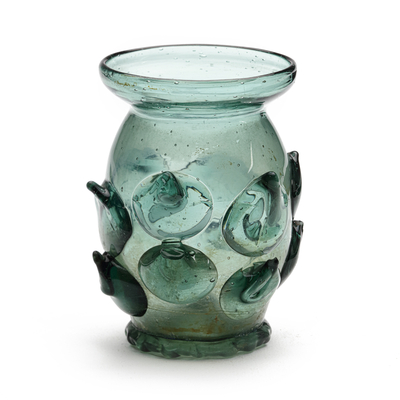Pewter measure
Global shipping available
- Origin
- Netherlands
- Period
- 1500-1550
- Material
- Pewter
- Height
- 22 cm
- Diameter
- 12 cm
- Literature
J.F.H.H. Beekhuizen, De schoonheid van het oude tin - een overzicht van vijf eeuwen tin, Waalwijk 1998, pp. 12 - 14, 47, 48.
Catalogus Museum Willet - Holthuysen & Provinciaal Museum Sterckshof & Museum Boymans -
Van Beuningen, Keur van tin uit de havensteden Amsterdam, Antwerpen en Rotterdam, Antwerpen 1979, p. 198.
B. Dubbe, Tin en tinnegieters in Nederland, Lochem 1978, pp. 157 -163.
J. Westers, ‘Tinnen inhoudsmaten in Groningen’, Meten & Wegen, 2006, pp. 3206 - 3213.
Questions about this object?
Please use one of the contact options below:
Description
This excavated pewter jug has a single-jointed hinge and a vertical moulding seam; both characteristic of early pewter jugs before 1650. After 1650 the moulding seams usually run horizontally and the hinge is double-jointed. Above the hinge is a profiled hammerhead thumbpiece and the side of the hinge is decorated with a quatrefoil or flower. The hinge continues into the curved handle, which bends slightly outwards at the bottom. The top of the handle bears an indistinct master’s mark. The rounded belly stands on a profiled foot and extends into a narrow cylindrical neck. The upper edge of the neck is decorated with three narrow bands. The lid is slightly domed. On the inside of the lid, the impression of the hinge is visible. On the bottom of the jug and on the inside of the lid the owner's initial V I is scratched. Inside the jug there is a measuring cone, which indicates how far the jug had to be filled, and which distinguishes the jug from pouring and drinking jugs. Both wet and dry goods were traded as loose goods and therefore had to be weighted and measured properly. For wet goods, jugs with a fixed content were used, which were regularly checked. The tinsmith had to be very precise when making a measuring jug, a deviation in the shape also meant a deviation in the correct measurement of the volume. On the side of the jug are two marks: the number 77 and a jester's or cherub's head with the letter W underneath. The 77 probably stands for the year 1577. The tinsmith who used a jester's or cherub's head and the W is still unknown.
The jug consists of two vertically intersecting halves, which were welded together. The separate halves were often cast in the same shape. A, usually wooden, mould was used for this purpose, which was pressed into a container with moulding sand, so that the shape of one half of the body was visible into the sand. The tinsmith then lifted the model, creating a space between the sand and the model, which was as thick as the sides of the intended can. Liquid tin was poured into this space, and after cooling one half was ready in rough form. The other half was made in the same way. The two halves were welded together and the vertical seam in the sides and horizontal seam in the bottom can be seen in most early jugs. A hole was left in the bottom through which the spindle of the lathe could be inserted. In the opening of the jug a spool with a hole for the spindle was fitted, so that the jug could be turned around and the tinsmith could work the jug. The handle, lid and hinge were added, after which the bottom was sealed with a separate sheet of tin. This medaillon can be seen in this jug at the bottom. The handle and the thumbpiece with the hinge were cast onto the jug. Where the hot tin touched the jug a rough spot can be seen: to prevent the jug from melting a wet rag was held against the hot tin, which left an imprint. Finally the jug was polished. Around 1550 the way pewter jugs were cast changed. Instead of two vertical halves, a foot and neck were forced together, resulting in a horizontal seam. In the Middle Ages and sixteenth century the joint was almost always single-jointed , later this became double-jointed, and from the eighteenth century triple-jointed.
For a similar Amsterdam jug see: 'Keur van tin', p. 198.
